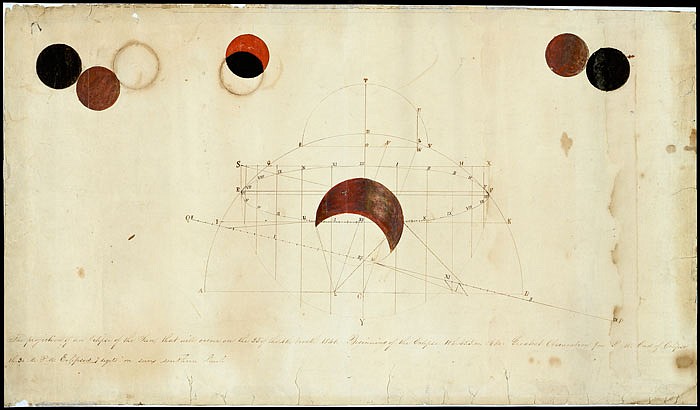On this day in 1257, it is likely people of the Mississippian culture saw a total solar eclipse from what is today Cole County, similar to what will be seen here Aug. 21.
According to Eugene Vale, an interpretative resource specialist with Missouri State Parks, that was the last time the area now known as Jefferson City was under the path of a total solar eclipse.
A total solar eclipse has not crossed Missouri's borders in 148 years, and then only clipped the northeast corner. The United States has not seen one in 38 years.
Many things have changed in the 760 years since that last local sighting - the Osage tribe emerged, the French and Spanish took turns claiming the territory, the Lewis and Clark expedition traveled through once it became part of the United States, and then westward expansion.
But other aspects of humanity remain constant throughout millennia and geography, like the wonder at cosmic events.
Archaeological evidence shows populations recording and interpreting solar eclipses as early as 2000 B.C. Rock art and hieroglyphs are the earliest records.
Interpreting the non-verbal record is subjective, said Christine Boston, Lincoln University professor of anthropology. However, astronomy is providing greater dating precision.
"A primary goal of this work is to assist historians and archaeologists in the identification and dating of eclipses found in references and records from antiquity," Fred Espenak and Jean Meeus wrote in "Five Millennium Canon of Solar Eclipses: 1999 to +3000" for NASA.
"This is no easy task because there are usually several possible candidates."
"Ultimately, historical eclipse identification can lead to improved chronologies in the timeline of a particular culture."
According to the website missourisolareclipse.com, "some historians tie the crucifixion to a 1 minute-59 second total solar eclipse that occurred in the year 29 C.E., while others said a second total eclipse, blocking the sun for four minutes and six second, in 33 C.E. marked Jesus' death."
During the 5,000-year period from 2000 B.C.-3000 A.D., Earth will experience 11,898 eclipses of the sun, according to the report. That includes 3,173 total eclipses, 4,200 partial eclipses, 3,956 annular eclipses and 569 hybrid eclipses.
The Anasazi of southwestern North America, the Maya in Central America and the ancient Chinese are among those earliest cultures to record eclipse sightings.
Most early cultures interpreted the momentary anomaly to be a "bad omen" or a "sign from the gods," Boston said.
Even the ancient Greeks and Mesopotamians advanced their scientific knowledge to better predict when these "bad omens" would occur, she said.
The ancient Irish, in contrast, were one of the few cultures to see a solar eclipse as a good thing, Boston said. She will explore these cultures and their views on eclipses at a talk Aug. 20 at the Missouri River Regional Library.
Chinese historians documented a total eclipse in 1302 B.C. that blocked out the sun for 6 minutes and 25 seconds.
"Because the sun was a symbol of the emperor, an eclipse was seen as a warning to the leader. After an eclipse, an emperor would eat vegetarian meals and perform rituals to rescue the sun," according to missourisolareclipse.com.
Babylonian clay tablets tell of the earliest recorded total solar eclipse seen in Ugarit, a port city in northern Syria.
"(The) eclipse darkened the sky for two minutes and seven seconds in 1374 B.C.," according to the website. "Mesopotamian historians recount that the sun was 'put to shame' during this total eclipse."
The Mayans' Dresden Codex, one of the few written records to survive the Spanish missionaries' destruction in the 1600s, provides several tables thought to be accounts of various eclipses and other cosmic phenomenon.
Much of what fueled the modern European birth of science followed books and ideas of the Islamic Age from a millennium earlier, including astronomical observations.
Following an eclipse Feb. 12, 1831, a slave uprising was led by Nat Turner. "He witnessed the eclipse and took it as a sign from God to begin an insurrection against slave holders," according to the website greatamericaneclipse.com.
And, the epic eclipse of 1919, when the sun vanished for 6 minutes and 51 seconds, scientists confirmed Albert Einstein's theory of general relativity by measuring the bending of light from the stars as they passed near the sun, the website said.

